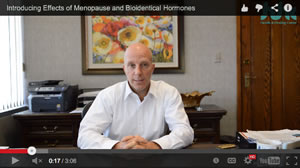A growing epidemic in the U.S. is hypothyroidism—a condition describing an underactive thyroid. The thyroid gland is a major player in every aspect of our being. Despite its critical role, as much as half of the more than 25 million people with hypothyroidism are undiagnosed.
The thyroid gland is found in the neck and comes from the ancient Greek word meaning “shield,” due to the shape of its associated cartilage. Yet, the word happens to describe more than its shape—it shields us from wearing down due to stress and disease, serves as the catalyst for stimulating energy, muscle growth, and metabolic rate, encourages a balanced interplay of all other hormones in your body, and supports brain function.
In general, the main features of an underactive thyroid include low energy, never feeling rested, feeling cold, loss of concentration, menstrual irregularities, weight gain, constipation, chronic digestive problems, depression, dry and itchy skin, and hair loss. A poorly functioning thyroid means less energy, making it difficult to work out and be active. Even if you are able to muster the energy, it will be almost impossible to build muscle. In terms of weight loss, an underactive thyroid makes it difficult to lose weight and burn fat. Finally, a dysfunctional thyroid will play havoc on women’s and men’s sex hormones leading to low sex drive, menstrual irregularities, irritable mood, and a foggy brain. In other words, the thyroid makes or breaks your performance in all areas of your life.
It pays to identify a dysfunctional thyroid as early as possible. The challenge is that more than one hundred different symptoms may be associated with an irregular functioning thyroid. In addition, these symptoms may occur gradually, worsen over time, and mimic the symptoms of other illnesses, making an underactive thyroid difficult to diagnose.
A blood chemistry test may help identify a thyroid problem—yet, it may not be the best method. The most common and officially recognized gold standard to evaluate your thyroid is based on a measure called TSH, which is not as accurate or sensitive as it needs to be in order to identify when a person’s thyroid is malfunctioning. However, the test continues to be widely used because it was one of the first test methods for hypothyroidism and is easy to use.
Moreover, it takes years for new research findings and clinical discoveries to percolate through the actual practice of medicine. So while there are more effective and accurate tests available, the usual mode of thyroid testing reflects this sad reality. Meanwhile, people continue to feel lousy and are trapped in outdated and archaic standards of healthcare. As part of an integrative medicine approach, I include a more thorough and comprehensive lab panel in order to fully investigate a person’s thyroid. Only by incorporating the most current thyroid tests, I can either rule out or diagnose a thyroid problem as the source of your symptoms.
Finally, after determining if the thyroid is part of the problem, the individual must receive a tailored, personal treatment that goes beyond just the standard Synthroid dosing regimen. One size does not fit all. For example, a person may need both T4 and T3. In addition to treating the disease, it is essential to find the underlying root cause of the disease and create an environment for your body to self-heal and function properly. Thyroid problems can result from irregular blood sugar levels, poor digestion, food sensitivities, adrenal problems, chronic inflammation, nutritional deficiencies, and/or environmental toxins.
In order to support proper thyroid function, and to support overall health in general, I encourage you to practice the lifestyle pillars of health including proper sleep, a well programmed exercise routine, a low-glycemic and anti-inflammatory diet, and relaxation techniques such as meditation or yoga. Despite these efforts, if you start to experience the symptoms of hypothyroidism, then a comprehensive thyroid panel and a targeted treatment strategy will keep you performing at your best.


